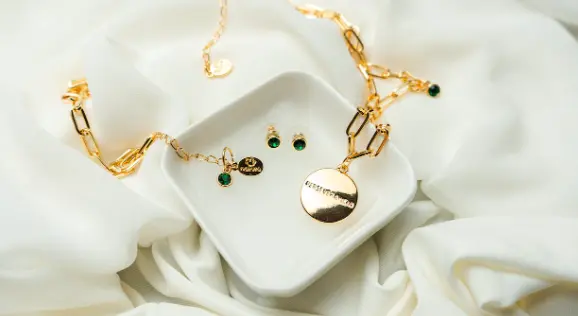Have you recently heard about chainiste? It’s the trendiest new pastime sweeping the country. It pronounced “shuh-neest,” is a fun and creative craft in which you weave together different colored chains to create beautiful patterns and motifs. It is worth a look whether you’re searching for a fun new talent to learn or a unique present idea for friends and family.
What Exactly Is Chainiste? Identifying a New Trend
Chainiste is a contemporary craft movement in which chains and fabrics are combined. Chains, chain mesh, and chain links are being used in novel ways to create jewelry, clothes, decorations, and other items.
The chain has an edgy, industrial edge about it. Many designers begin with a basic t-shirt, jacket, or accessory and then embellish it with chains, chain stitching, or chain mesh appliques. Chain fringe may be made by joining many chains along an edge or hem. Moreover, make a complex design by weaving small chains through cloth or leather. For a strong attachment, adhere chains to a surface via fabric adhesive, sewing, or welding.
Chainiste Fashion’s Origins and History
Chain rule fashion dates back to the late nineteenth century in France. Furthermore, Chain stitch embroidery was a popular handicraft, and artisans began experimenting with chain stitch embroidery on garments, accessories, and home décor. This evolved into the separate style known as Chainiste.
The Golden Era
Chainiste’s Golden Age was considered to be the early 1900s. Additionally, chain stitching was popular among haute couture seamstresses and tailors, notably in Paris. From silk gloves and stockings to evening dresses, jackets, and undergarments, intricate chain stitch motifs decorated everything. You can find its collections at department stores such as Le Bon Marché.
Decline and Rebirth
Chainiste declined due to the emergence of machine-made clothes until the 1960s when there was a renaissance of handcrafts and an appreciation for distinctive, handcrafted fashion. Using hand and machine embroidery, contemporary designers have recreated the chain style.
The items are now sought for by both collectors and fashionistas. Its design, whether it’s a classic Belle Époque camisole or a current jacket with metallic chain stitch details, symbolizes a fascinating era in fashion history as well as highly skilled craftsmanship that continues to inspire.
The history and origins of this intricate and sumptuous technique are as enthralling as the stitching itself. Its fashion gives us a peek at the creativity and workmanship of yesteryear.
Tips and Inspiration for Wearing the Chainiste Look
Start with a basic tee or tank top and match it with a chain necklace for an edgy vibe. Add extra accessories such as:
- Chunky rings: For an eye-catching statement, stack a couple of sterling silver or gemstone rings together.
- Bracelets: Earthy-toned leather or bead bracelets suit the mood. Wear multiple on the same wrist.
- Belts: A broad belt embellished with metal studs, grommets, or chains will complete the style. Cinch it around the waist of a tunic, dress, or cardigan.
- Boots: Combat, biker, and hiking boots are great for the chainiste look. Look for boots with buckles, straps, or laces, as well as a sturdy sole.
- Jackets: A leather, denim, or utility jacket is the ideal casual layer for your alice in Chains ensemble. Choose one with zippers, buckles, or patches to add character.
- Scarves: Add flowing texture and dimension with a lightweight cotton or chiffon scarf in a plain hue or a loose checkered design. Wrap it around your neck or your head.
Pair a graphic tank with black skinny jeans or leggings, a studded belt, chunky motorcycle boots, and a cropped denim jacket for a head-to-toe food chain style. Finish with a chain necklace, a bracelet stacked on one hand, and a patterned scarf. You’ll be wearing the trend in no time if you walk with confidence!
Layering garments with an edgy, even rebellious feel while keeping the overall appearance casual and easy is crucial to the chainiste style. Begin with a few core pieces and then experiment with other textures, patterns, and accessories to see what you prefer. This adaptable fashion trend allows you to express your distinct identity.
Conclusion
So there you have it, a concise explanation of what chainiste is all about. While it may appear to be a niche hobby at first glance, it has a lot to offer those who are willing to take the plunge. If you’re looking for a fun creative outlet, want to manufacture some unique jewelry. Or interest in metallurgy, it’s a great place to start with plenty of room for advancement. The fundamental abilities are simple to learn but need practice to perfect. If any of this has caught your attention, try it. You could discover a new interest and a community of fellow chains to connect with. Chain’s possibilities are as varied as the chains that may be designed and crafted.
FAQ’s
What exactly is Chainiste, and how do I get started with this trendy craft?
Chainiste is a creative craft movement in which chains are woven into various patterns.
What kinds of things can I make using Chainiste?
Chainiste enables for the fabrication of a broad variety of items, including jewelry, apparel, decorations, and more.
Is Chainiste a new trend, or does it have a long history?
Chainiste has historical origins in France reaching back to the late nineteenth century. It was revived in the 1960s and continues to influence modern designers.
Is Chainiste suitable for both skilled and inexperienced crafters?
Chainiste is adaptable and open to both experienced and novice makers, with plenty of freedom for creativity and experimentation.









Leave a Reply